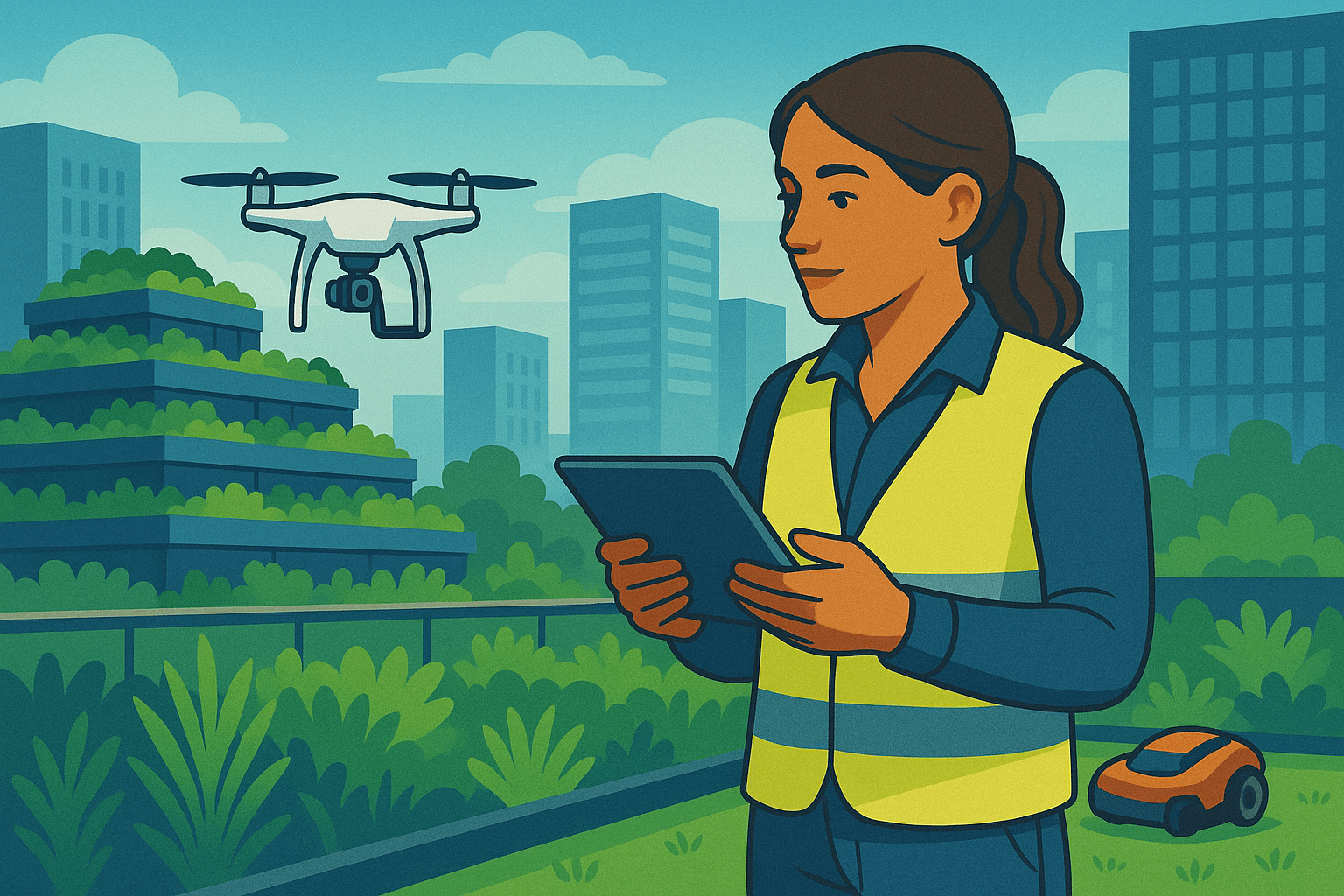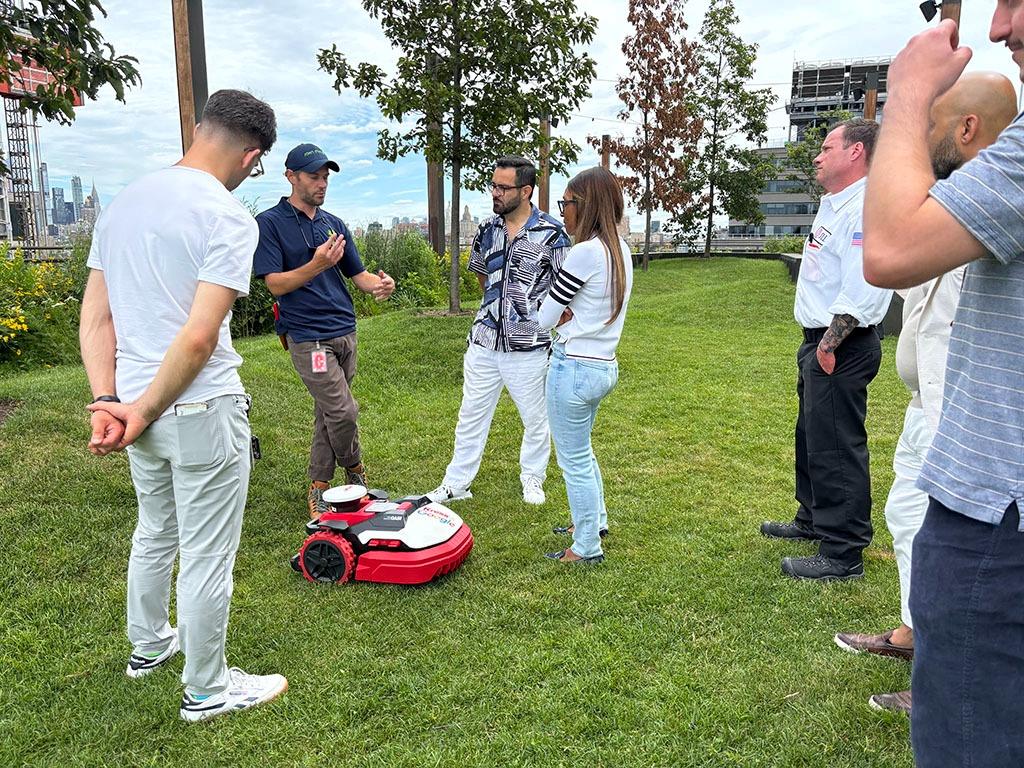Where Innovation Takes Root: The Future of Urban Horticulture
Michele Ferrero was, arguably, one of the greatest confectioners, and entrepreneurs, of all time. Though not a household name in the U.S., the Italian craftsman quietly built a global legacy by performing his craft doggedly and remaining out of the limelight.
Most of what’s written about him exists in Italian, but his creations speak every language — Nutella, Kinder, Ferrero Rocher, and Tic Tacs. Yes, Tic Tacs.
Listening to a podcast on his story, one detail hit home with me. He aggressively invested in technology and innovation, in the mid-1900s, no less. Picture it: a candy craftsman in a lab, toiling over new confections while prioritizing automation, precision machinery, and R&D. It’s a striking reminder that technology and craftsmanship are not opposites. They’re partners.
If a confectioner in post-war Italy saw technology as a tool to refine and elevate his craft, why shouldn’t we in horticulture do the same?
In the world of urban horticulture, innovation isn’t optional. At John Mini, technology has always been a quiet force behind our craft, shaping how we design, build, and care for our clients.

As our founder, John Mini, once said, “People, technology, and a fine-tuned, customer-driven philosophy have always been the cornerstones of our success.”
In our Where Innovation Takes Root series, we explore the technologies advancing our urban horticulture. From the hardware transforming fieldwork to the software empowering our team.
Today, we start with a driverless spin, exploring our investment in urban autonomous mowing. It’s a strategic investment in technology that creates measurable value for our clients.
While the capital expense to deploy this equipment is significant, we view it as a forward-thinking commitment. Over time, these investments preserve our operating margins while allowing us to pass along value through reduced maintenance costs and improved consistency. This is how technological advancement should serve people: by increasing efficiency while elevating the client experience.
When the right tools are placed in the hands of skilled horticulturists, the results are transformative.
Improved Client Experience
Cities never stop moving and neither do we. But maintaining urban landscapes requires sensitivity to how people use them. Many of the lawns we maintain serve as shared outdoor amenities — spaces for residents to relax, for tenants to gather, or for professionals to work outside.
Traditional mowing introduces noise, traffic, and large equipment conveyance that is disruptive to these shared spaces. Our autonomous mowers change that dynamic. Operating at an average of 60 decibels, they’re quieter than a normal conversation and nearly 30 decibels lower than conventional mowers.
With fewer personnel and no large equipment entering and exiting the site, our operations have become almost invisible. This means less disruption for clients and their tenants, and more uninterrupted enjoyment of outdoor spaces designed for people, not machines.

Considering the Environment in Delivery of Service
We’re the first to admit: lawns themselves are not the most sustainable feature in the landscape. Yet, in urban environments, they hold incredible importance, offering places for connection, play, and simple moments of joy.
My two-year-old loves the children’s book My Heart Fills with Happiness by Monique Gray Smith. There’s one page that always resonates, “My heart fills with happiness when I walk barefoot in the grass.” I think about the green spaces of New York City, far and few between, and how sometimes these small pockets include a lawn where people can still experience that same joy. All landscapes are spaces for human connection and their unique elements opportunities for visceral moments.
By introducing electric, autonomous mowers, and each incremental technological advancement, we can hunt down environmental efficiencies for these essential green spaces. Some wins with the current iterations of technology: when the full lifecycle is considered, including the electricity used for charging, studies show a reduction of overall carbon emissions by more than 80% compared to gas-powered models.
It’s a balance between environmental responsibility and human experience, maintaining the lawns that ring happiness, while evolving how we care for them.
Horticultural Precision
Autonomous mowing empowers horticulturists to focus on the work that truly defines a space: plant health, pruning, and detail work that elevates a property from maintained to masterfully curated.
As our Director of Outdoor shares:
“This is an initiative we began exploring back in 2018 when the technology was in its infancy. Fast forward to 2025, and we now operate a fleet of autonomous mowers across the five boroughs, each linking to satellite systems to digitally map and precisely manicure lawns. By integrating tools like this, we’re enabling our horticulturists to focus on the fine detail work that sets each property apart while technology handles the heavy lifting.”
— Matthew Wessol, Director of Outdoor at John Mini Distinctive Landscapes
As plant people, we have a tendency to skip right past the client experience and dive straight into the horticultural side of innovation. It’s what excites us. The way new tools let us fine-tune care down to the smallest detail.
Precision does translate into healthier, longer-lasting landscapes. In this case, autonomous mowing, when managed effectively, produces ultra-fine clippings that decompose quickly, returning nutrients to the soil and naturally enriching its structure. It also reduces soil compaction, allowing for deeper root growth and stronger, more resilient turf.
In short, what excites us as horticulturists — the quiet science behind the practice — ultimately benefits our clients most: landscapes that stay vibrant and built to last.
Client Spotlight: The Durst Organization
While autonomous mowing has quickly taken hold in suburban landscapes and campuses, its urban potential has gone largely untapped. Until now.
Recognizing the opportunity for meaningful impact, The Durst Organization partnered with John Mini to pioneer the first autonomous mowing fleet in New York City.
What began as an exploration in innovation has evolved into a new benchmark for sustainable landscape management, including the highest-deployed autonomous mower in the world on a lawn 50 stories into the sky.
This collaboration demonstrates the real value of thoughtful innovation, reducing environmental impact and elevating the tenant experience across dynamic outdoor environments.
Looking Ahead.
At John Mini, we’ll continue investing in technology that passes along value and deepens the connection between people and their environment. In upcoming pieces of our Where Innovation Takes Root series, we’ll explore more tools reshaping our craft.
And if you’ve made it this far, we hope you’re enjoying a few Tic Tacs. A sweet nod to the craftsman who proved even the smallest innovations can have lasting impact.
